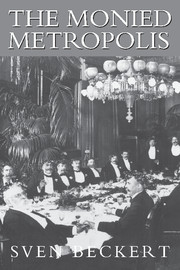Book contents
- Frontmatter
- Dedication
- Contents
- Maps, Graphs, and Illustrations
- Acknowledgments
- Abbreviations
- The Monied Metropolis
- Introduction
- Part I Fortunes, Manners, Politics
- Part II Reluctant Revolutionaries
- Part III A Bourgeois World
- 7 Democracy in the Age of Capital
- 8 The Culture of Capital
- 9 The Rights of Labor, The Rights of Property
- 10 The Power of Capital and the Problem of Legitimacy
- Epilogue
- Notes
- Index
10 - The Power of Capital and the Problem of Legitimacy
Published online by Cambridge University Press: 05 July 2014
- Frontmatter
- Dedication
- Contents
- Maps, Graphs, and Illustrations
- Acknowledgments
- Abbreviations
- The Monied Metropolis
- Introduction
- Part I Fortunes, Manners, Politics
- Part II Reluctant Revolutionaries
- Part III A Bourgeois World
- 7 Democracy in the Age of Capital
- 8 The Culture of Capital
- 9 The Rights of Labor, The Rights of Property
- 10 The Power of Capital and the Problem of Legitimacy
- Epilogue
- Notes
- Index
Summary
On December 15, 1880, the gates of the new armory of the 7th New York Regiment swung open. After years of fund-raising, the armory of New York's elite regiment had finally been finished. To mark the occasion, “fashionable and distinguished” guests ventured to the sparkling new building on Manhattan's Upper East Side to join in the festivities of the New Armory Inauguration Ball. They ate and danced till late at night, examining “with deep interest the elaborate furniture, … the prizes in silver and bronze won by the company in various contests, and the splendid trophies of armor and arms, ancient and modern.” Dinner, as always, was served by the caterer of choice – Delmonico's.
This sunny December day was the culmination of an eight-year struggle by upper-class New Yorkers to give a new home to the 7th Regiment. As early as 1873, the “tax payers and business men” had disseminated a petition in elite circles for the construction of a new armory. In the circular they had urged the city to pay for the construction, yet when adequate funds were not forthcoming, the regiment and its supporters, undeterred, appealed to “the active and veteran members of the Regiment,” and to “the liberal citizens, business men, and tax-payers of the city of New York” to support the endeavor out of their own purses. The response was overwhelming: Merchant Royal Phelps sent in a check for $500 the very same day he received the appeal, and by May 1, 1875, $80,000 had come in from such illustrious bourgeois New Yorkers as the Astors, Browns, Dodges, Singers, and Vanderbilts.
- Type
- Chapter
- Information
- The Monied MetropolisNew York City and the Consolidation of the American Bourgeoisie, 1850–1896, pp. 293 - 322Publisher: Cambridge University PressPrint publication year: 2001



